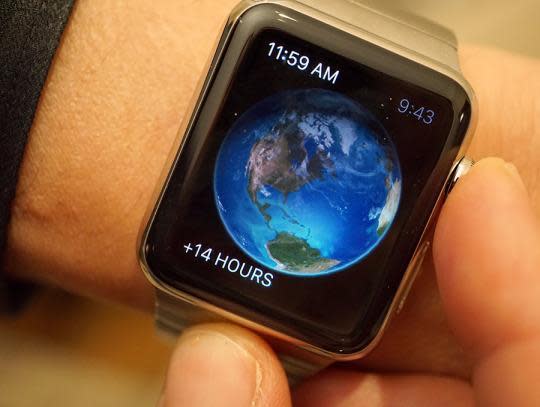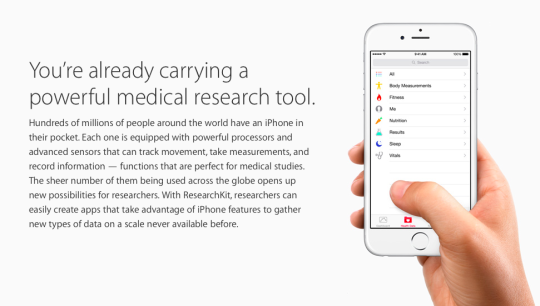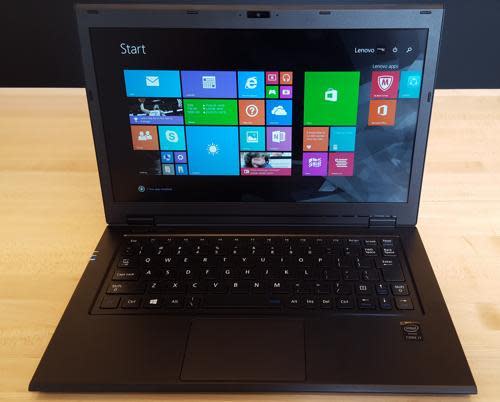The Best Tech Products of 2015 (So Far)
The signs are unmistakable: The kids are on vacation. It’s hot as Hades out there. We’ve just had the All-Star game. The presidential campaign is in full swing. (OK, it’s the campaign for next year’s election, but whatever.)
Yep: We’re already halfway through 2015, which means we’ve had six months’ worth of new tech products to look at, play with, and pass judgment on. Among the many, many gadgets, apps, and services we’ve seen this year, we’ve definitely had some favourites. Here’s our top 10.
Amazon Echo
Rip the brains of Siri or Android Now out of their respective smartphones, and install them instead in a black cylinder that sits on a shelf, and you’ve got the Amazon Echo, a voice assistant that does a decent job of imitating the effect of the omnipresent Star Trek computer.
Echo understands your spoken commands from across the room, hands-free, as you’re cooking, reading, doing homework, discussing, living. It knows when you’re addressing it because you precede each command with its name, which, for some reason, is Alexa. You can ask her about sports, news, weather, unit conversions, facts, geography, anything in Wikipedia. You can ask her to tell a joke or to reorder something you’ve previously ordered on Amazon (kitty litter, diapers, whatever).
Above all, you can ask her to play music; Echo works, in various degrees, with Pandora, Spotify, TuneIn, iHeartRadio, and so on. Turns out she’s also a rich-sounding Bluetooth speaker. Amazon intends to keep adding more features to Echo’s somewhat limited vocabulary, but already, being able to call up any album, band, song, or genre just by asking the room for it is a killer app for a first-of-its-kind device. — David Pogue
Apple Watch

The Apple Watch was in many ways the archetypal Apple product: It wasn’t the first of its kind. Just as there were MP3 players before the iPod and smartphones before the iPhone, there were smartwatches before Apple’s. Yet, as its predecessors had failed to catch fire with the gadget-buying public, the Apple Watch still managed to register about 7.8 Kardashians on the media-hoopla scale.
However, once that hoopla subsided and we had a chance to actually try out the thing itself, the reality was still pretty cool: The Apple Watch is a nicely designed accessory to the iPhone that saves wearers the indignity of pulling out their phones to check Twitter, news, weather forecasts, calendars, and other info tidbits. Its built-in fitness tools have definitely helped at least one typically sedentary demographic (tech writers) to stand up and move around more. And, as third-party app developers continue to adapt their iOS software for the wrist, the Apple Watch will (as so many Apple products do) get better with time. Like I say: Typical Apple. — Dan Miller
ResearchKit

ResearchKit is a software toolkit that lets researchers write iPhone apps for medical studies. That’s a huge deal because of the extraordinary number of smartphones and fitness trackers that we’re all carrying around or wearing these days. Monitoring our activity, sleep, heartbeat, and more, these devices track terabytes of useful data every day — but currently that potentially useful data just gets thrown away. Scientists can’t get at it, analyze it, or parse it to draw conclusions about medicine and health.
ResearchKit is the simple, brilliant answer. It could, potentially, unlock that data and safely make it available to researchers — without violating your privacy. You, the phone owner, have total control over how much of your data you want to share, how long you want to share it, and which studies (if any) you want to join.
Why would Apple go to this trouble? To sell more iPhones, right? Not really: Apple made ResearchKit open-source. Microsoft, Samsung, Google, and anybody else are welcome to incorporate it into their software and devices, too. Apple doesn’t make a dime from it — but for medical science, it could be a priceless resource. — David Pogue
Galaxy S6

A lot of smartphones hit the market in the first half of 2015, but the best of the lot hands down was the Samsung Galaxy S6. Not only is this the most attractive smartphone Samsung has ever produced, it’s also got one of the most accurate cameras of any handset around. It’s speedy, has a gorgeous display and svelte metal body, and packs both a built-in fingerprint reader and mobile payment system. (We’re still waiting for Samsung to switch that last one on.)
Sure, people complained about the S6’s lack of a removable battery and expandable storage. But the vast majority of consumers generally don’t bother with those features anyway, so they’re largely a wash. All in all, you can’t do much better in a smartphone right now than the Galaxy S6. — Daniel Howley
LG G4

If Samsung’s Galaxy S6 was the best smartphone of the first half of 2015, then why is the LG G4 on this list, too? Two words: the camera. That’s right, the LG G4’s camera easily captures the most accurate and colorful images of any major smartphone on the market.
In a series of tests comparing the LG G4 to Samsung’s Galaxy S6 and Note 4, Apple’s iPhone 6 and 6 Plus, and the HTC One M9, the G4 offered the sharpest, most vivid photos of any phone.
True, the G4 doesn’t have the best display, and it’s not exactly attractive. But if the most important thing about a phone for you is the quality of its camera, the LG G4 is the tops. — Daniel Howley
Lenovo LaVie Z

It might not be as attractive as Apple’s MacBook or MacBook Air, but the Lenovo LaVie Z doesn’t have to be. That’s because, at just 1.87 pounds, the LaVie Z is lighter than both of Apple’s lightest portables — not to mention every other 13-inch laptop on the planet.
Seriously, this thing is so lightweight you’ll instantly be tempted to toss it around like a Frisbee. And unlike the rest of the superlight laptops out there, the LaVie Z actually has the processing power to do things like edit photos and videos without slowing to a crawl.
In other words, it’s a crazy-light computer with heavy-duty power. — Daniel Howley
MacBook

Ever since the iMac debuted sans floppy drive, Apple designers have sought to pare away the inessential. The only hitch has been that their definition of “inessential” has often been a couple of years ahead of the public’s.
That was the case again this spring when the company unveiled its latest, lightest laptop ever, the 12-inch MacBook. It’s superthin and superlight—even thinner and lighter than the MacBook Air. To make the necessary trims, Apple eliminated a bunch of connectors — standard USB, video output, Thunderbolt, Ethernet, even the MagSafe power port. There’s just one USB-C port, which handles both power and data connections.
Did Apple go too far? For some users, perhaps. But others may find that they can live just fine without all those ports — just as they learned to live without the floppy drive way back when Apple deleted that “must-have” feature from the iMac. And, if nothing else, this MacBook showed that Apple is still willing to make some bold design decisions. — Dan Miller
New Nintendo 3DS XL

Nintendo has dominated the handheld video game business for years, but that hasn’t stopped it from constantly tweaking its systems. In the case of the New Nintendo 3DS XL, that’s a very good thing.
Improvements are everywhere, from intelligently repositioned switches to a handy, long-overdue analog stick nestled comfortably above the face buttons. Better still, it packs more technical punch than the standard 3DS model. And while Nintendo has been slow to roll out games that specifically take advantage of the burlier processor, you can feel it working when you switch between apps and boot up games.
The New 3DS XL is not perfect: The lack of a bundled AC adapter means it’s more of an upgrade than a starting spot for newbies, plus the memory card is too small. But with the PlayStation Vita flailing, the New Nintendo 3DS XL is far and away the best dedicated handheld video game system on the market. — Ben Silverman
Roku 3

A growing number of boxes — including the Amazon Fire TV, Apple TV, and Google Chromecast — stream Internet content to your big-screen TV. But none can hold a candle to the new Roku 3 for ease of use and reliability.
The new $100 Roku 3 works just like the old $100 Roku 3, only better. You can search for something to watch by speaking the name of a show or channel into the remote. (Take that, Amazon Fire.) That’s a good thing, because there are now more than 2,000 channels to choose from — everything from A&E to Zootown Church, including the ones you really want (Amazon Video, Netflix, HBO Go, and so on). It will even alert you when shows you’ve been waiting to see are finally available for streaming. Virtually the only thing it doesn’t do is make popcorn. Guess we’ll have to wait until Roku 4 comes out for that. — Dan Tynan
Sling TV

The arrival of Sling TV is great news for people who love to watch sports and other live TV but hate paying their cable provider for the privilege. For $20 a month, this app delivers a dozen popular “cable” stations — including ESPN, TBS, TNT, CNN, and the Disney Channel — to any connected device. For another $5 a month each, you can add packages offering more kids channels, news, or sports. Thanks to Sling TV, I was able to watch nearly every second of this past spring’s March Madness on whatever device I had handy — my phone, my laptop, or my Roku.
Is Sling TV flawless? No. My roundball consumption was occasionally marred by connection problems (which invariably kicked in during the final two minutes of the game). But when it worked, Sling TV was a thing of beauty — and a cord cutter’s dream. — Dan Tynan

 Yahoo Finance
Yahoo Finance 